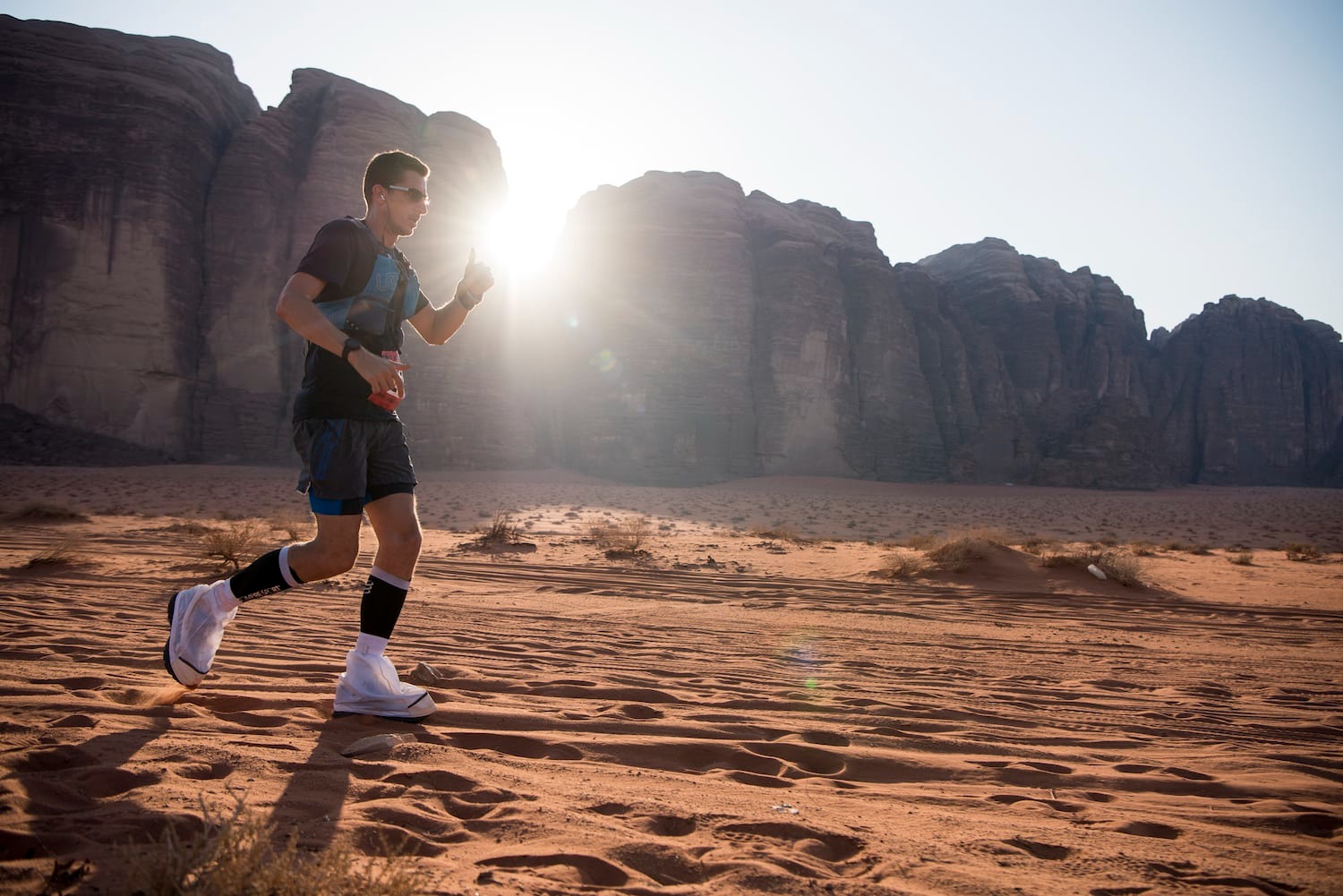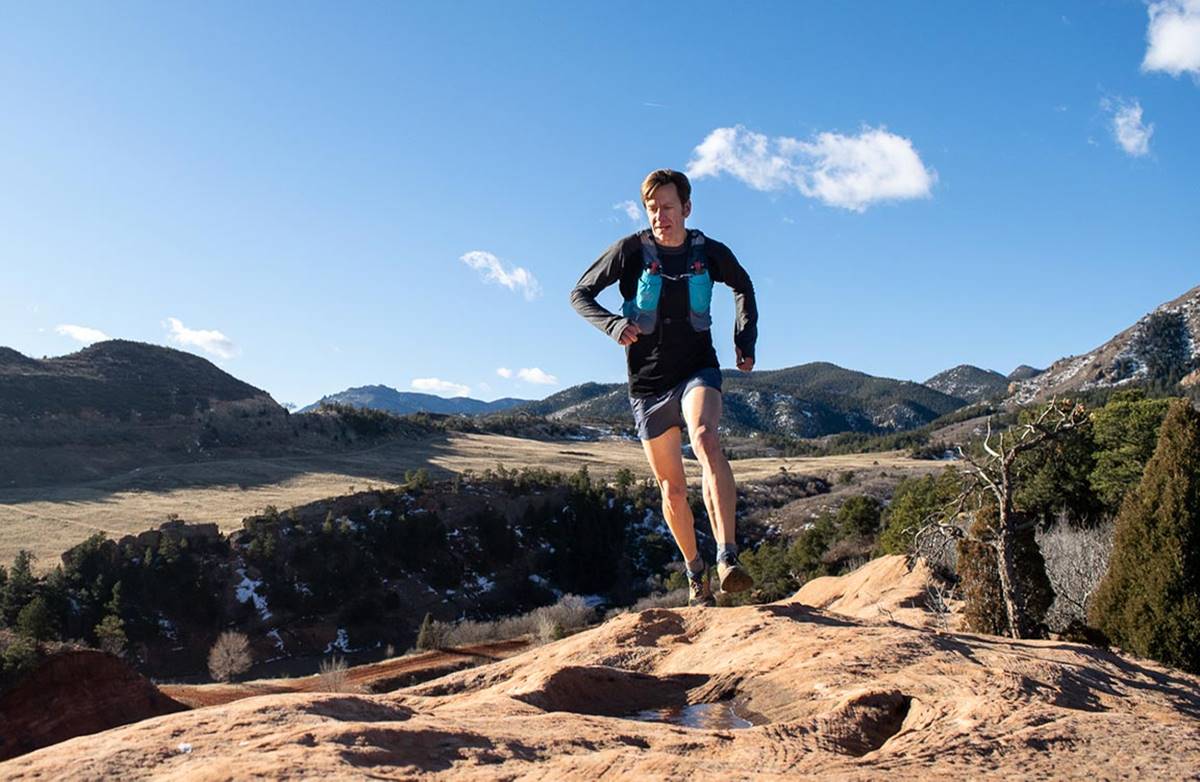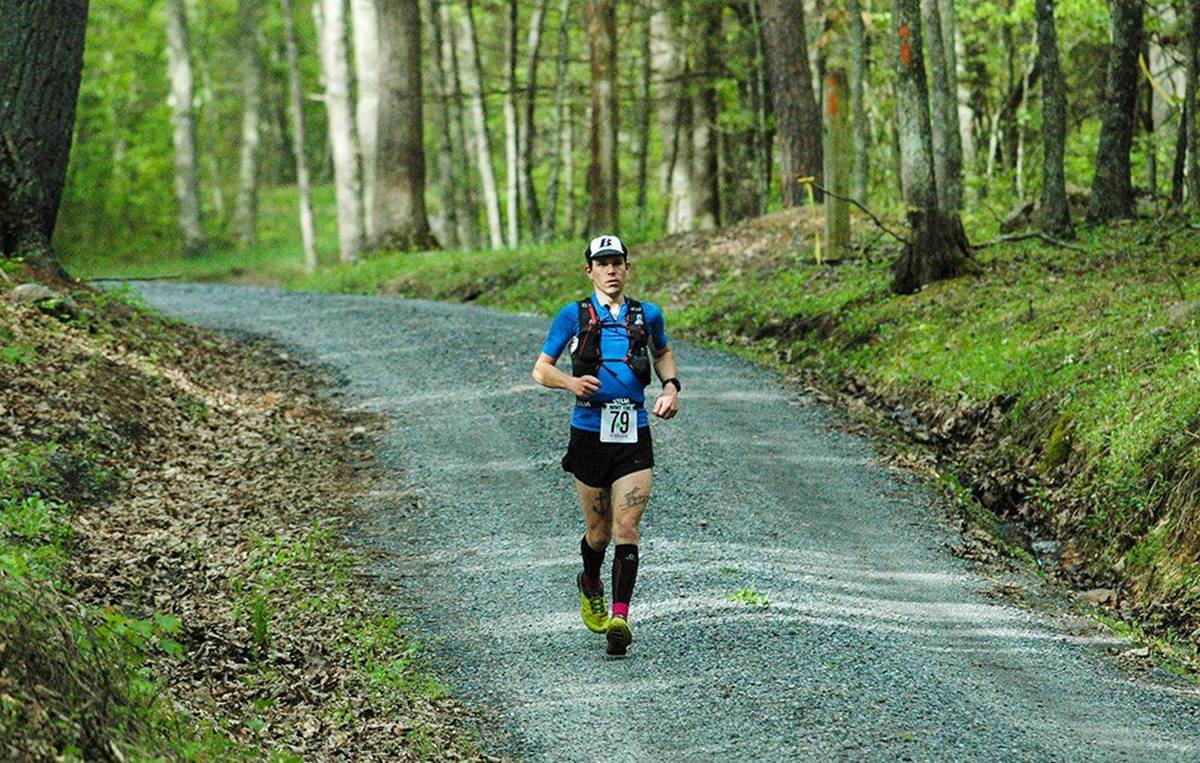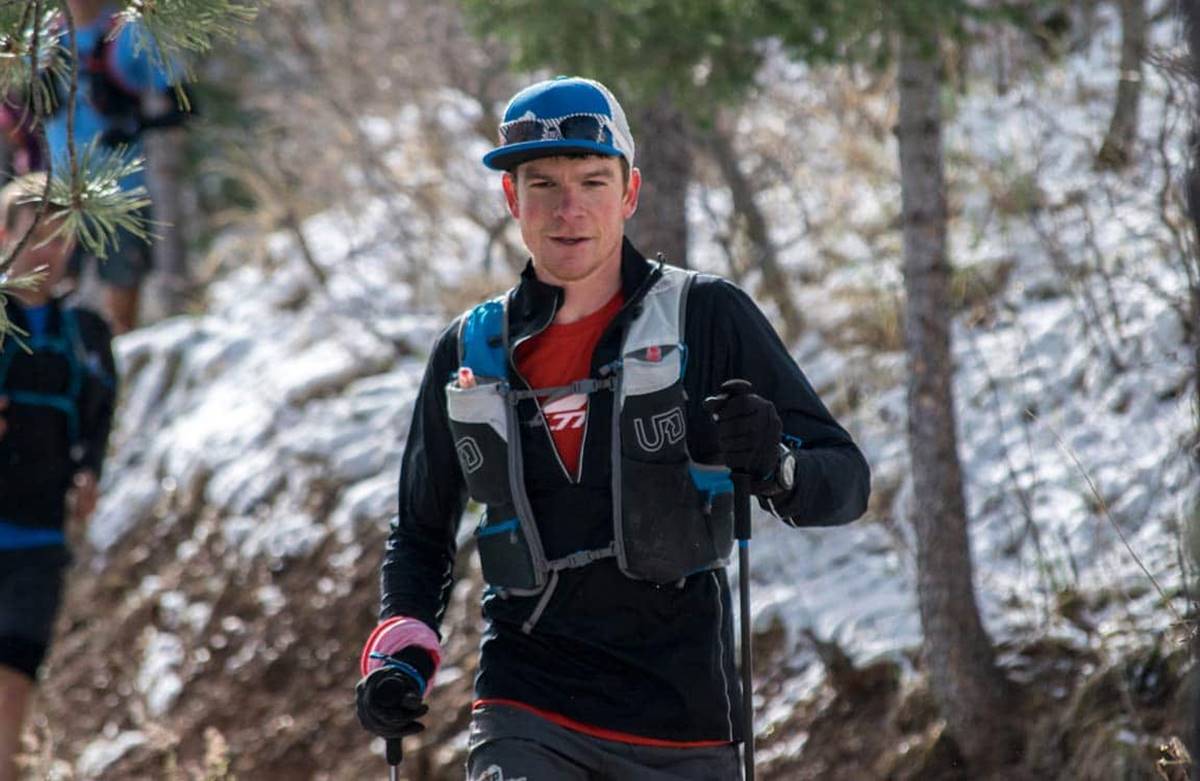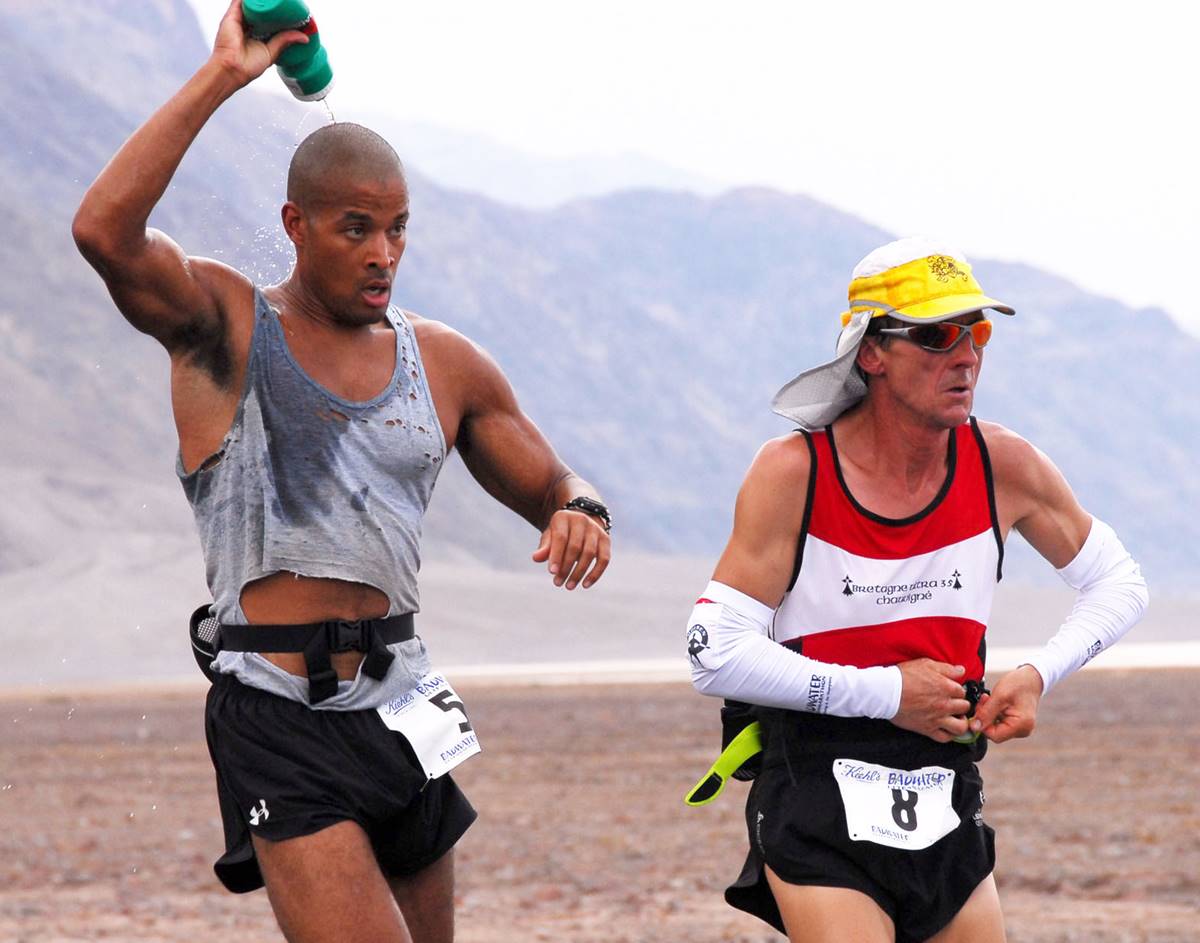Home>Misc>Featured>How Long Does It Take To Run The Death Valley Ultramarathon?
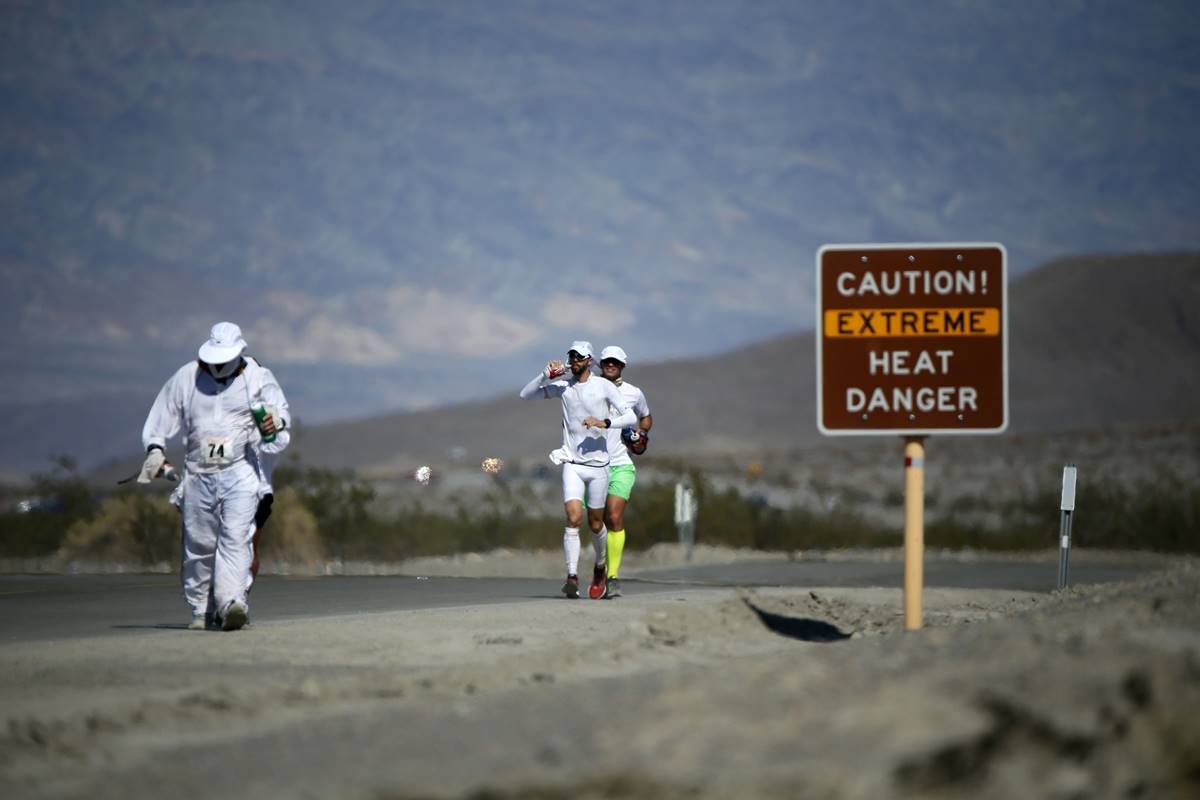

Featured
How Long Does It Take To Run The Death Valley Ultramarathon?
Modified: January 2, 2024
Discover the featured Death Valley Ultramarathon, an incredible endurance race. Find out how long it takes to complete this challenging event.
Introduction
Are you ready to embark on a journey that pushes your limits and tests your endurance? The Death Valley Ultramarathon is a grueling feat of human strength and determination, attracting runners from all over the world. This epic race takes place in the scorching heat of Death Valley, California, known as one of the hottest places on Earth.
The Death Valley Ultramarathon is not for the faint of heart. It is a true test of physical and mental resilience, spanning a distance of 135 miles across some of the most challenging terrain imaginable. With temperatures reaching up to 130 degrees Fahrenheit, the race sets a daunting stage for those brave enough to participate.
In this article, we will delve into the world of the Death Valley Ultramarathon and explore what it takes to conquer this extreme endurance challenge. From the demanding training required to the strategies for success on race day, we will uncover the key elements that make this race both exhilarating and grueling.
Whether you’re a seasoned ultramarathoner looking for your next epic challenge or a curious soul wanting to learn more about the limits of human endurance, join us as we take a closer look at one of the most extreme races on the planet – the Death Valley Ultramarathon.
The Death Valley Ultramarathon: A Grueling Challenge
The Death Valley Ultramarathon is not your average long-distance race. It is an extraordinary test of physical and mental endurance that pushes participants to their limits and beyond. The race is known for its unforgiving terrain, extreme temperatures, and daunting distance, making it one of the toughest ultramarathons in the world.
Set in the heart of Death Valley, a desert valley located in Eastern California, this race offers a unique and brutal challenge. With its scorching heat, arid landscapes, and jagged mountains, Death Valley presents a harsh environment that demands respect and careful preparation.
Participants in the Death Valley Ultramarathon must navigate through sand dunes, rocky canyons, and steep inclines, all while battling triple-digit temperatures. The race covers a staggering distance of 135 miles, making it an incredible test of endurance for even the most seasoned athletes.
In addition to the physical demands, the mental aspect of the race is equally challenging. Runners must face the psychological strain of pushing themselves to keep going, even when their bodies are telling them to quit. The solitude of the desert landscape can be both inspiring and isolating, testing the mental fortitude of the participants.
Moreover, the extreme temperatures in Death Valley add another layer of difficulty to the race. With the mercury rising well above 100 degrees Fahrenheit, runners must stay hydrated and maintain their body temperature to avoid dangerous heat-related conditions.
But despite the grueling nature of the Death Valley Ultramarathon, it attracts a dedicated community of ultrarunners who are drawn to the challenge. The allure of conquering one of the toughest races on the planet is a powerful motivator that drives participants to train tirelessly and push themselves to their absolute limits.
For those who have completed the Death Valley Ultramarathon, it is not only the achievement of finishing that is rewarding, but also the sense of camaraderie among fellow runners. The bonds established during the race, the shared struggles and triumphs, create a lasting connection among participants that can only be forged through enduring such a difficult challenge together.
In the next sections of this article, we will explore the preparation, training, and strategies necessary to tackle the Death Valley Ultramarathon. So, lace up your running shoes and prepare yourself for an unforgettable journey through the heat and rugged beauty of Death Valley.
Preparing for the Death Valley Ultramarathon
Preparing for the Death Valley Ultramarathon is a meticulous and arduous process that requires a combination of physical conditioning, mental fortitude, and careful planning. It is crucial to approach the race with a well-thought-out strategy to increase your chances of success in this grueling challenge.
The first step in your preparation journey is to thoroughly research the race and understand its unique demands. Familiarize yourself with the course, the terrain, and the climate of Death Valley. This knowledge will help you develop a training plan tailored specifically to the challenges you will face during the ultramarathon.
Building a strong aerobic base is essential for tackling a long-distance race like the Death Valley Ultramarathon. This involves gradually increasing your weekly mileage and incorporating regular long runs into your training regimen. By gradually building up your endurance, you will be better equipped to handle the physical demands of the race.
In addition to mileage, it is important to incorporate strength training exercises into your routine. Strengthening your core, legs, and upper body will enhance your overall stability and reduce the risk of injury during the race. Exercises like squats, lunges, planks, and push-ups can all contribute to your overall strength and endurance.
However, physical preparation alone is not enough. Mental resilience is equally crucial for completing the Death Valley Ultramarathon. Prepare yourself mentally by visualizing successful outcomes, practicing positive self-talk, and developing mental strategies to overcome obstacles that may arise during the race.
Another key aspect of preparation is fine-tuning your nutrition and hydration strategy. The extreme heat of Death Valley requires careful planning to ensure you stay fueled and hydrated throughout the race. Consult with a sports nutritionist to develop a personalized plan that takes into account your specific dietary needs and the demands of the race.
Furthermore, it is crucial to test your gear and equipment prior to the race. Invest in high-quality running shoes that are suitable for the rough terrain and have been worn and tested during your training. Additionally, experiment with different clothing options to find what works best for you in the extreme heat. Don’t forget to also consider sun protection, such as wearing a hat, sunglasses, and applying sunscreen to avoid sunburn.
Lastly, don’t underestimate the importance of rest and recovery. Incorporate rest days into your training plan to allow your body time to recover and avoid overtraining. Utilize techniques such as foam rolling, stretching, and massage to keep your muscles loose and prevent injury.
By taking the time to properly prepare for the Death Valley Ultramarathon, you will increase your chances of succeeding in this demanding race. Remember to approach your training and preparation with dedication, patience, and a mindset of constant improvement. So, lace up your shoes, fine-tune your strategy, and get ready to conquer the challenge that awaits you in Death Valley.
Training for the Race
Training for the Death Valley Ultramarathon requires a disciplined and structured approach to gradually build your endurance and prepare your body for the extreme demands of the race. It is essential to follow a training plan that includes a combination of long runs, speed work, strength training, and recovery days.
Long runs are a fundamental part of your training regimen and play a crucial role in building endurance. Gradually increase your mileage week by week, incorporating one long run per week. These long runs simulate the demands of the race and help condition your body and mind for the challenges ahead.
Speed work should also be incorporated into your training plan to improve your overall running efficiency and stamina. Interval training, tempo runs, and hill repeats are effective ways to build strength and improve your speed over shorter distances.
In addition to running, strength training is vital for preventing injuries and building overall body resilience. Aim to include two to three strength training sessions per week, focusing on exercises that target your core, legs, and upper body. This will improve your running form, stability, and overall performance.
Recovery days are just as important as training days. Including rest days in your schedule allows your body time to repair and rebuild, reducing the risk of overtraining and burnout. Utilize recovery techniques such as foam rolling, stretching, and low-impact cross-training to enhance muscle recovery and improve flexibility.
Another important aspect of your training is practicing running in similar conditions to that of Death Valley. If possible, train in hot weather conditions to help acclimate your body to the high temperatures you will experience during the race. This will help your body adjust and allow you to develop effective strategies to stay cool and hydrated.
Throughout your training, listen to your body and be mindful of any signs of fatigue or injury. It’s important to strike a balance between pushing yourself and allowing for proper rest and recovery. If you experience persistent pain or discomfort, consult with a healthcare professional to address any potential issues.
Additionally, use your training as an opportunity to fine-tune your nutrition and hydration strategy. Experiment with different fueling options during long runs to determine what works best for you and what keeps you energized and hydrated. Remember that proper nutrition and hydration are essential for optimal performance and endurance.
Lastly, don’t forget to stay motivated and enjoy the process. Surround yourself with a supportive community of fellow runners, participate in group runs or virtual races, and celebrate small achievements along the way. Training for the Death Valley Ultramarathon is a journey in itself, filled with ups and downs, but with dedication and perseverance, you will be prepared to conquer the challenges of the race.
The Route: A Scenic and Challenging Course
The route of the Death Valley Ultramarathon is as breathtaking as it is grueling. It takes participants through a diverse and awe-inspiring landscape, offering both stunning views and challenging terrain. The course is carefully designed to test the endurance and fortitude of runners, ensuring a true test of physical and mental strength.
The race begins at Badwater Basin, the lowest point in North America, situated at an elevation of 282 feet below sea level. From there, runners will face a steady climb up to Father Crowley Vista Point, where they will encounter steep grades and breathtaking mountain vistas. This ascent is known as the “gateway to the gauntlet,” signaling the beginning of the most challenging section of the course.
As runners continue their journey, they will pass through incredibly diverse terrains, including vast salt flats, sand dunes, and rugged mountain ranges. The course presents a mix of paved roads, dirt trails, and off-road sections, keeping participants on their toes and testing their adaptability to different surfaces.
One of the most iconic sections of the route is the famous “Devil’s Cornfield,” a stretch of the course characterized by tall, spindly plants that appear as though they belong in a surreal painting. This unique landscape adds a touch of mystery and intrigue to the race, challenging runners both mentally and physically.
Another standout feature of the course is the well-known “Stovepipe Wells,” a historic village located near the race route. This provides a welcome respite for runners, allowing them to refuel and recharge before continuing on their journey through the harsh desert environment.
Throughout the race, participants will be treated to breathtaking vistas of Death Valley’s unique rock formations, colorful canyons, and awe-inspiring sunrises and sunsets. The stark beauty of the landscape serves as a reminder of the incredible feat they are undertaking.
While the scenery is undoubtedly stunning, it’s important not to underestimate the challenges that the course presents. Runners must contend with extreme temperatures, unpredictable weather conditions, and the ever-present mental and physical fatigue that comes with running such a grueling distance.
Despite the formidable obstacles, completing the Death Valley Ultramarathon’s challenging course is an unforgettable achievement. It is a testament to the runner’s determination, perseverance, and ability to push through their limits in the face of adversity.
As participants traverse the varied terrain and take in the breathtaking vistas, they are reminded of the beauty and power of the natural world and their own inner strength. The route of the Death Valley Ultramarathon offers a unique and transformative experience that truly embodies the spirit of ultrarunning.
When braving the course of the Death Valley Ultramarathon, runners must remain focused and determined, drawing strength from the awe-inspiring surroundings and the knowledge that the ultimate reward awaits them at the finish line.
Race Day: Facing the Elements
Race day at the Death Valley Ultramarathon is a true test of both physical endurance and mental resilience. Participants must not only conquer the distance but also face the relentless elements that Death Valley presents. From scorching temperatures to unpredictable weather conditions, runners must be prepared for whatever challenges arise on this demanding day.
The first challenge begins with the race start in the early morning hours. Even at these early hours, temperatures in Death Valley can already be soaring, making proper hydration and heat management critical from the very beginning. Runners must set a steady pace, conserving energy and maintaining a steady fluid intake to prevent dehydration and heat exhaustion.
As the day progresses, the intense heat becomes an ever-present obstacle. The unforgiving desert sun beats down on runners, pushing their bodies to their limits. Proper sun protection in the form of hats, sunglasses, and sunscreen is essential to guard against the harmful rays that can cause sunburn and heatstroke.
Additionally, unpredictable weather conditions can pose a challenge on race day. Despite Death Valley’s reputation for extreme heat, participants must also be prepared for sudden temperature drops, strong winds, and even unexpected rainstorms. Proper layering and adaptable gear are crucial to navigate these changing conditions with ease.
The rugged terrain adds another layer of difficulty to race day. Runners must tackle steep climbs, rocky trails, and sandy sections, requiring agility, strength, and strategic footwork. Staying focused and maintaining proper form is essential to navigate safely through the challenging course.
Mental resilience plays a vital role during the race. The long hours spent running in solitude through an expansive desert landscape can take a toll on runners’ mental well-being. Maintaining a positive mindset, staying focused on the goal, and employing mental strategies to overcome moments of doubt are crucial to push through the mental challenges that arise during the race.
Throughout the race, aid stations are strategically placed to provide runners with essential supplies, including water, electrolytes, and fuel. These aid stations offer a brief moment of relief and respite, allowing runners to refuel, rehydrate, and gather their strength before continuing their journey through the demanding course.
Support from fellow runners and race volunteers is also a valuable aspect of race day. The camaraderie among participants creates a sense of community and encouragement, enabling runners to embrace the challenges and push each other toward success.
As the day progresses and participants push towards the finish line, a mix of physical exhaustion and sheer determination fuels their final push. The mental and physical sacrifices made throughout the race culminate in a triumphant finish, a testament to the unwavering spirit of the ultrarunner.
Completing the Death Valley Ultramarathon is not just about conquering the distance; it is about facing the elements head-on and pushing through the physical and mental barriers that arise. It is a true test of character, determination, and the unwavering will to achieve the extraordinary.
Strategies for Success
Successfully completing the Death Valley Ultramarathon requires careful planning, mental fortitude, and a well-executed strategy. Here are some key strategies to enhance your chances of success in this grueling endurance challenge:
1. Pace Yourself: One of the most important strategies is to establish and maintain a sustainable pace throughout the race. Starting too fast can lead to burnout, while going too slow may hinder your progress. Find a comfortable rhythm that allows you to conserve energy for the duration of the race.
2. Hydration and Nutrition: Proper hydration and nutrition are crucial for enduring the extreme conditions of Death Valley. Develop a hydration plan that includes frequent water intake, electrolyte replenishment, and fueling with easily digestible foods or energy gels. Listen to your body’s needs and fuel up accordingly.
3. Adapt to the Terrain: The race course presents a variety of terrains, from sand dunes to rocky trails. Adapt your running technique and stride to suit the terrain you are encountering. Take shorter steps on sandy sections and maintain a strong and stable form on the uneven surfaces to minimize the risk of injury.
4. Mental Strategies: The mental aspect of ultramarathons is just as important as the physical. Develop mental strategies to stay focused and motivated when facing challenges. Break the race down into smaller, manageable segments, and celebrate each milestone achieved. Visualization, positive self-talk, and using personal mantras can also help overcome moments of doubt.
5. Stay Cool: Managing your body temperature is essential in the extreme heat of Death Valley. Start the race early in the morning when temperatures are cooler, wear light-colored and loose-fitting clothing, and use cooling techniques like pouring water over your head and neck at aid stations. Be vigilant for signs of heat-related illnesses and act accordingly.
6. Buddy System: Consider joining forces with a running partner or a group during the race. Having someone to share the journey with can provide motivation, encouragement, and support along the way. A running buddy can help keep you accountable and provide a welcome distraction during the long miles.
7. Aid Station Strategy: Utilize aid stations strategically. Take advantage of the supplies provided, refuel properly, and maximize the short break to recharge both physically and mentally. Use this time to assess your condition, make any necessary adjustments, and restock provisions before continuing on.
8. Embrace the Scenery: While the race is undoubtedly challenging, don’t forget to take in the breathtaking scenery of Death Valley. When facing moments of fatigue or doubt, let the landscape inspire and motivate you to keep moving forward. Appreciating the beauty around you can provide a much-needed boost to your spirits.
Remember, every runner is different, so it’s essential to find the strategies and techniques that work best for you. Experiment during your training runs to fine-tune your approach and establish a race-day plan that is both realistic and adaptable. With the right strategies and mindset, you can conquer the challenges of the Death Valley Ultramarathon and achieve your goals.
Mental and Physical Endurance: Key Factors in Finishing the Race
The Death Valley Ultramarathon is not only a test of physical endurance but also a battle of mental strength. The ability to push through physical fatigue, overcome mental obstacles, and maintain a resilient mindset are key factors in successfully finishing this grueling race.
Physical endurance plays a significant role in completing the Death Valley Ultramarathon. The race demands months of rigorous training, gradually building up mileage and endurance to prepare the body for the immense challenge ahead. A solid aerobic base, developed through consistent long runs and speed work, is paramount for enduring the 135-mile journey.
However, it is the mental endurance that often becomes the deciding factor in whether a runner finishes the race. Ultramarathons like the Death Valley Ultramarathon push participants beyond their physical limits, requiring them to dig deep and tap into their mental reserves to keep going when their bodies beg them to stop.
During the race, runners inevitably encounter moments of doubt, pain, and mental fatigue. This is where mental resilience becomes imperative. Developing mental strategies, such as positive self-talk, visualization, and goal setting, can help athletes overcome these challenges and continue moving towards their goal.
Motivation is another crucial aspect of mental endurance. Runners need to remind themselves of why they embarked on this challenging journey in the first place. Whether it’s personal achievement, a sense of accomplishment, or pushing boundaries, keeping the end goal in mind can provide the necessary motivation to push through the physical and mental barriers.
Moreover, breaking the race down into smaller, manageable sections can alleviate the overwhelming pressure of completing the full distance. Focusing on each mile or aid station reached, rather than fixating on the remaining miles, can make the race seem more achievable and less daunting.
Support from fellow runners, race organizers, and spectators can also significantly contribute to a runner’s mental endurance. The shared experiences and camaraderie along the race course create a sense of community and encouragement, with fellow participants often providing a much-needed morale boost during challenging moments.
Maintaining a positive mindset is critical throughout the race. Embracing a can-do attitude, celebrating small victories, and practicing gratitude can all enhance mental resilience. The ability to adapt to unexpected situations, such as changes in weather or course conditions, can also help runners navigate the ups and downs of the race with a determined and adaptable mindset.
Physical and mental endurance go hand in hand, consistently influencing and supporting one another. When the body is pushed to its limits, mental toughness becomes the driving force to carry on. Conversely, a positive and resilient mindset can help overcome physical discomfort and fatigue, enabling runners to push beyond what they previously believed possible.
In the end, it is the combination of physical and mental endurance that allows runners to triumph over the challenges of the Death Valley Ultramarathon. The ability to persevere through physical pain, mental fatigue, and the unpredictable elements of the race is what ultimately leads to crossing the finish line.
By developing both physical and mental endurance through training, employing effective mental strategies, and embracing the support and encouragement of others, runners can unlock their highest potential and achieve the remarkable feat of completing the Death Valley Ultramarathon.
Crossing the Finish Line: Celebrating the Achievement
Crossing the finish line of the Death Valley Ultramarathon is a moment of triumph and celebration for every participant. It represents the culmination of months of hard work, unwavering dedication, and relentless determination. The feeling of accomplishment and pride that washes over runners as they complete this grueling race is truly indescribable.
As runners approach the finish line, the emotions intensify. Fatigue and physical exhaustion temporarily fade into the background as the realization of what they have achieved takes hold. The cheers and applause from spectators and fellow runners provide a surge of energy, propelling them to find that final burst of strength.
With each step closer to the finish line, a flood of memories from the race journey rushes through their minds. Every blister, every muscle ache, and every mental hurdle faced becomes a testament to their resilience and determination. The finish line is the culmination of countless hours of training and preparation, and it represents the triumph over both the physical and mental challenges encountered along the way.
As they cross the finish line, runners are met with an overwhelming sense of accomplishment and an outpouring of support from those who have witnessed their incredible journey. Family, friends, fellow competitors, and race volunteers offer words of praise, high-fives, and well-deserved applause.
The medal placed around their neck becomes a tangible symbol of their extraordinary feat, a cherished memento of their perseverance and strength. It serves as a reminder that they have accomplished something exceptional, something that not everyone can comprehend or achieve. It is a symbol of their dedication, determination, and unwavering will to push beyond their limits.
As the initial rush of crossing the finish line subsides, a sense of reflection and gratitude takes over. Runners reflect on the immense challenges they overcame, the personal triumphs they experienced, and the growth they achieved throughout the journey.
The post-race celebration is a time to thank those who supported them along the way, from coaches and training partners to family and friends who stood by their side through the grueling training and cheered them on during the race. It is a moment to express gratitude for the opportunity to test their limits and for the incredible experience that the Death Valley Ultramarathon provided.
Even after the immediate celebration fades, the sense of accomplishment earned from finishing the Death Valley Ultramarathon remains imprinted on the runner’s soul. It becomes a part of their identity, a source of inspiration for future endeavors, and a reminder of what they are capable of achieving with determination and tenacity.
Beyond the individual achievement, the finish line of the Death Valley Ultramarathon creates a bond that transcends personal triumph. It connects the runners in a unique and powerful way. The shared experiences, struggles, and triumphs create a community of individuals who have overcome tremendous obstacles and documented their journeys in the annals of their personal histories.
Crossing the finish line of the Death Valley Ultramarathon is more than just completing a race; it is an affirmation of the human spirit, a testament to the limitless potential that lies within each individual. It is a celebration of the power of determination, resilience, and the unwavering commitment to achieving what once seemed impossible.
Conclusion
The Death Valley Ultramarathon is an extraordinary race that tests the limits of human endurance, both physically and mentally. Participants in this grueling race face extreme temperatures, challenging terrain, and their own inner doubts, making it a true test of resilience, determination, and strength.
Through careful preparation, training, and strategic approaches, runners can increase their chances of successfully completing the Death Valley Ultramarathon. Building physical endurance, developing mental resilience, and embracing the support of fellow runners and spectators are essential components of a successful race.
The journey through Death Valley’s stunning landscapes and unforgiving conditions is an experience that transcends the race itself. The shared bond among runners, the sense of camaraderie, and the celebrations at the finish line create memories that will last a lifetime.
While the Death Valley Ultramarathon presents immense challenges, it also offers an opportunity for personal growth, self-discovery, and the exhilaration of achieving what once seemed impossible. Crossing the finish line is not only a celebration of physical prowess but also a testament to the power of the human spirit.
Whether you’re a seasoned ultramarathoner looking for the ultimate test or an aspiring runner seeking inspiration, the Death Valley Ultramarathon offers an unparalleled adventure. It pushes the boundaries of what you thought you were capable of and invites you to uncover your true potential.
So, lace up your running shoes, embark on a training journey filled with dedication and perseverance, and prepare yourself to face the relentless elements of Death Valley. The Death Valley Ultramarathon awaits, ready to challenge your limits and reward you with an experience of a lifetime.
